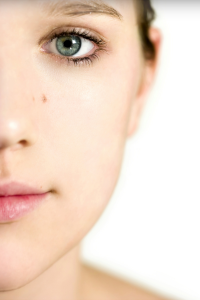
The following information provided below are surgical acne scar treatment options which fall into microdermabrasion, photorejuvenation, scar revision and laser skin resurfacing.
1) Microdermabrasion:
This acne scar treatment option improves overall skin tone and lustre and appears to help superficial mild acne scars. It also works best if you get a series of at least 6 peels, having one every 1-2 weeks. It uses very fine aluminum crystals to create a micro dermabrasion effect on the skin. Although the face is the most common area, other sun damaged areas such as the neck, chest, arms and hands may be treated. The effects may be more pronounced than glycolic acid peels, and should be used for those patients who do not yet require laser skin resurfacing or who do not want to deal with the longer healing time.
This treatment is recommended for:
- Sun damaged skin
- Irregular pigmentation including sun spots and melasma
- Irregular and rough complexion
- Stretch marks and mild wrinkles
- Acne scars
Advantages:
- Minimal discomfort
- Short treatment time
- Virtually no recovery time
- Control of treatment parameters between conservative and aggressive
- Safe to use for all skin types and colours
- Relatively inexpensive when compared to laser treatments
Disadvantages:
- Multiple treatments may be required
- It will only have minimal effect on deep lines or severe pigment problems
Procedure:
After all makeup is removed and the skin is washed and prepped with a special cleanser, the power peel is performed. The treatment takes between 10-20 minutes, after which a moisturizer is applied. The skin remains slightly pink for a few hours to a day, but makeup may be used if desired. Peels may be repeated in as few as 12 days and the effects appear to be more dramatic if preceded by one or more glycolic acid peels. The ongoing use of topical alphahydroxyacids (AHAs) (such as NeoStrata® Glycolic Acid), Vitamin A, or Vitamin C compounds will help maintain the result of treatment. Toxicity studies have shown that the crystals used in the power peels are safe.
2) Photorejuvenation:
Using laser or broadband visible light, 5-6 treatments that are performed every 3-4 weeks will improve mild acne scarring by causing new collagen to form.
3) Scar Revision:
Surgical removal (or excision) of acne scars is especially effective for ice pick and boxcar scars. The excision may be in the form of a punch that is closed with sutures that are removed about 7 days later.
Another technique called subcision uses a sharp instrument to undercut this scar tissue, rolling scars are a result of scar tissue holding the skin down, the overlying skin is not cut so there is no need for sutures.
4) Laser Treatments:
- Laser resurfacing (CO2 laser, Erbium Yag laser)
- Pulsed dye laser
Laser skin resurfacing:
This technique uses a combination of laser carbon dioxide (CO2), and/or Erbium:YAG laser. The skin is removed layer by layer, which removes the uppermost portion of the scars, at the same time heat produced by the laser tightens the skin, which will help smooth out the scars. After laser skin resurfacing, you won’t see the final results for about 18 months. During this time, the skin and its collagen remodel and smooth out the scars. Laser resurfacing is often combined with one or several other treatments for acne scars. This combination approach consistently gives better results when compared to other therapies.
When laser resurfacing and surgical treatment for acne scars are combined, the surgical treatment is usually completed 6-12 weeks before the laser resurfacing. This gives your skin time to heal and remodel itself. Laser resurfacing is superb for treating shallow boxcar scars, as well as for smoothing and tightening scars that have been treated previously.

0 comments:
Post a Comment